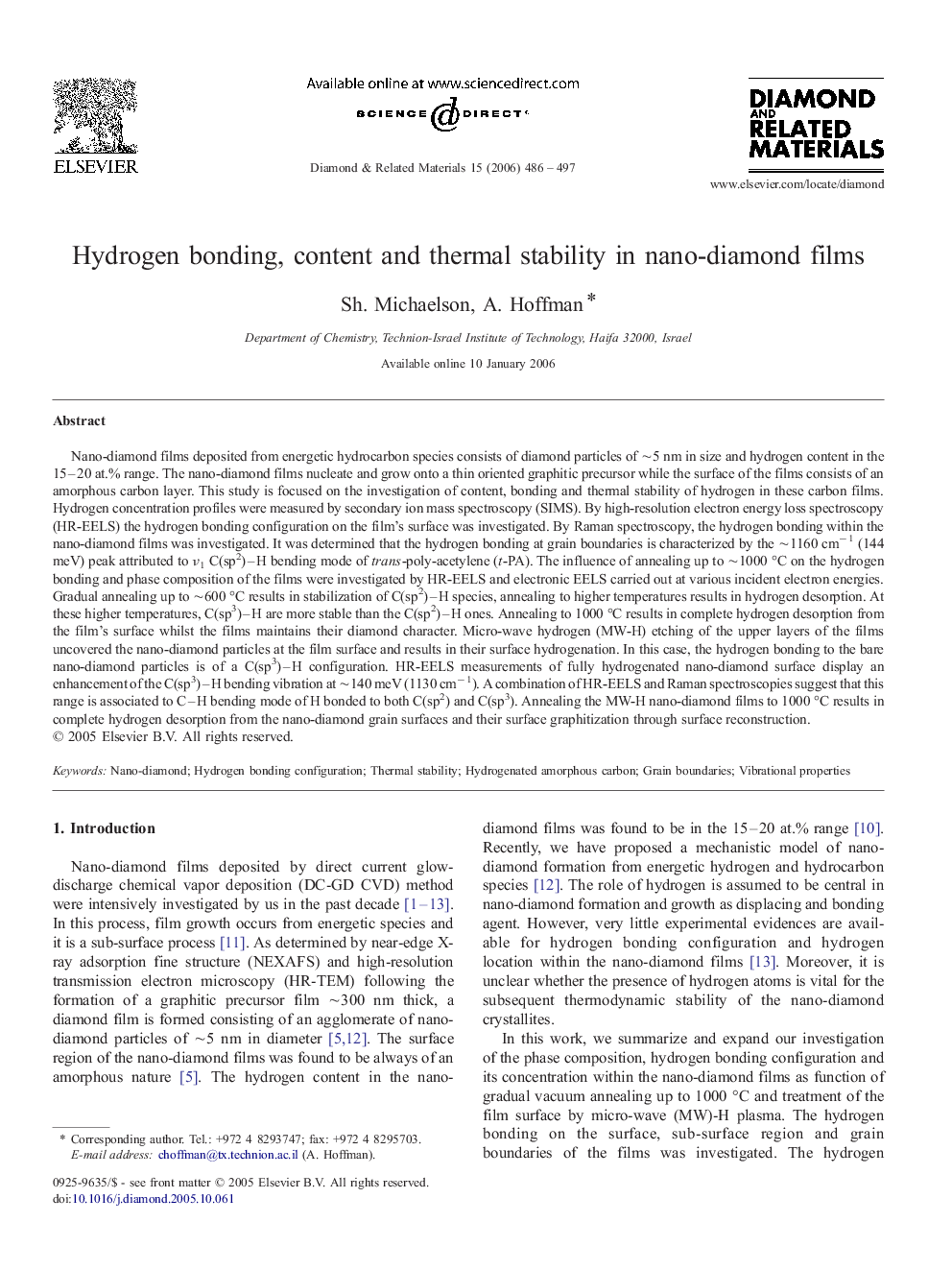| کد مقاله | کد نشریه | سال انتشار | مقاله انگلیسی | نسخه تمام متن |
|---|---|---|---|---|
| 703308 | 1460821 | 2006 | 12 صفحه PDF | دانلود رایگان |

Nano-diamond films deposited from energetic hydrocarbon species consists of diamond particles of ∼5 nm in size and hydrogen content in the 15–20 at.% range. The nano-diamond films nucleate and grow onto a thin oriented graphitic precursor while the surface of the films consists of an amorphous carbon layer. This study is focused on the investigation of content, bonding and thermal stability of hydrogen in these carbon films. Hydrogen concentration profiles were measured by secondary ion mass spectroscopy (SIMS). By high-resolution electron energy loss spectroscopy (HR-EELS) the hydrogen bonding configuration on the film's surface was investigated. By Raman spectroscopy, the hydrogen bonding within the nano-diamond films was investigated. It was determined that the hydrogen bonding at grain boundaries is characterized by the ∼1160 cm− 1 (144 meV) peak attributed to ν1 C(sp2)–H bending mode of trans-poly-acetylene (t-PA). The influence of annealing up to ∼1000 °C on the hydrogen bonding and phase composition of the films were investigated by HR-EELS and electronic EELS carried out at various incident electron energies. Gradual annealing up to ∼600 °C results in stabilization of C(sp2)–H species, annealing to higher temperatures results in hydrogen desorption. At these higher temperatures, C(sp3)–H are more stable than the C(sp2)–H ones. Annealing to 1000 °C results in complete hydrogen desorption from the film's surface whilst the films maintains their diamond character. Micro-wave hydrogen (MW-H) etching of the upper layers of the films uncovered the nano-diamond particles at the film surface and results in their surface hydrogenation. In this case, the hydrogen bonding to the bare nano-diamond particles is of a C(sp3)–H configuration. HR-EELS measurements of fully hydrogenated nano-diamond surface display an enhancement of the C(sp3)–H bending vibration at ∼140 meV (1130 cm− 1). A combination of HR-EELS and Raman spectroscopies suggest that this range is associated to C–H bending mode of H bonded to both C(sp2) and C(sp3). Annealing the MW-H nano-diamond films to 1000 °C results in complete hydrogen desorption from the nano-diamond grain surfaces and their surface graphitization through surface reconstruction.
Journal: Diamond and Related Materials - Volume 15, Issues 4–8, April–August 2006, Pages 486–497